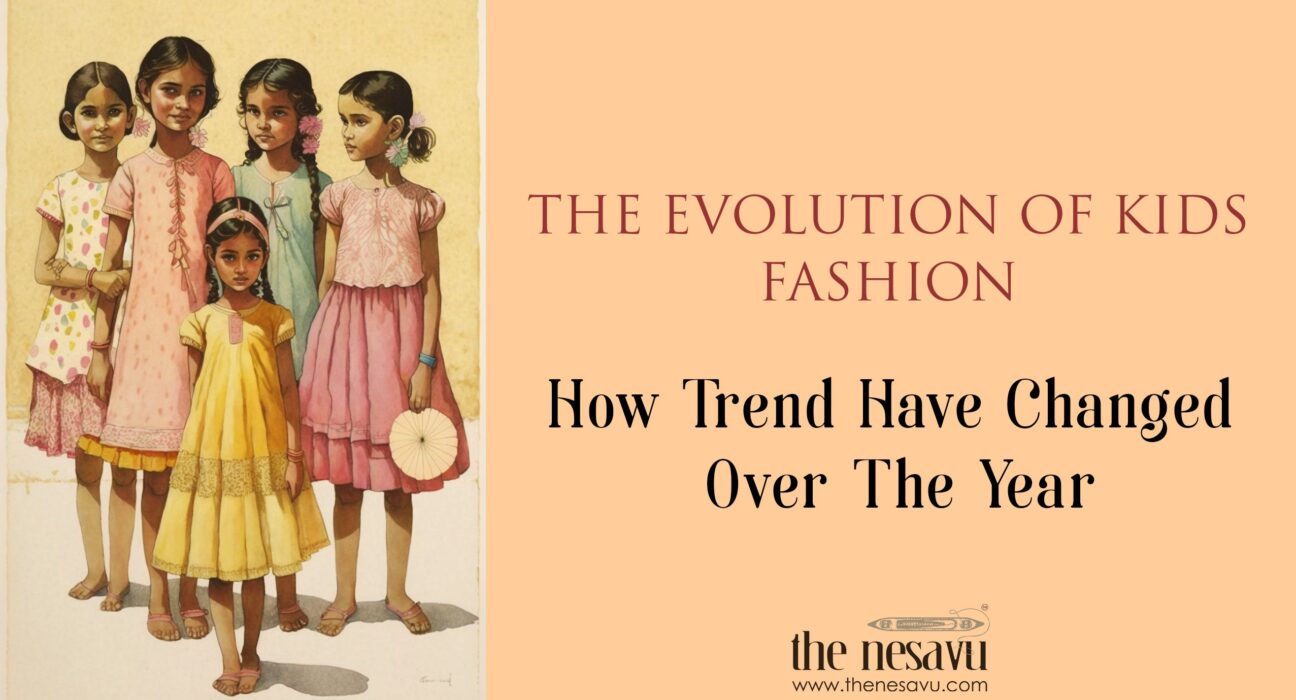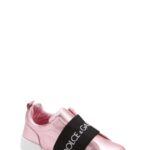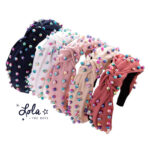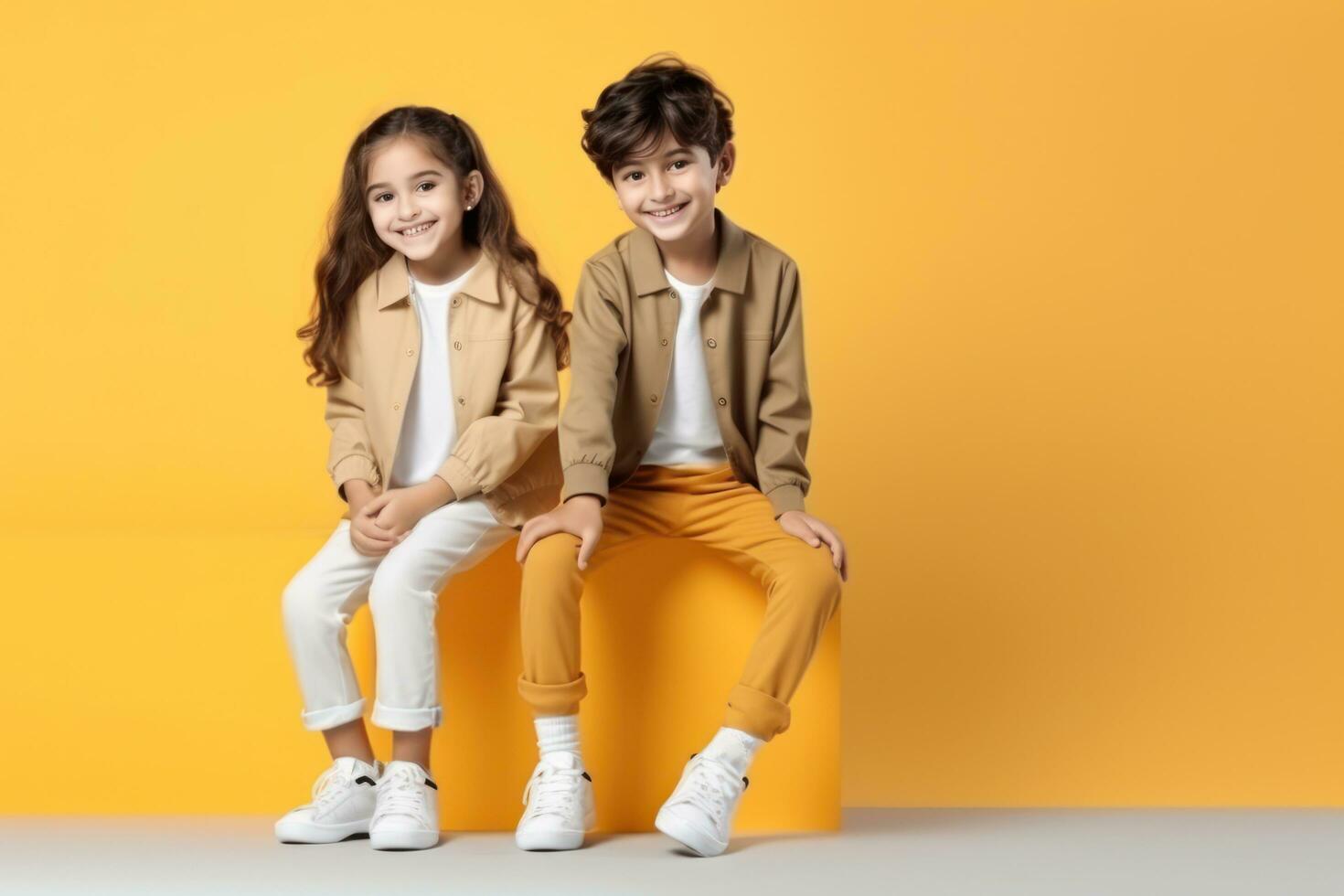Kids’ fashion has come a long way. It constantly evolves with trends and cultural shifts.
From miniature adult outfits in the past to today’s unique styles, kids’ fashion reflects changing times. Early children’s clothing was often practical and simple. Over the years, it transformed into a vibrant and diverse industry. Each decade introduced new styles, colors, and fabrics.
Designers began to focus on comfort and individuality. Today, kids’ fashion is a blend of creativity and practicality. It mirrors adult fashion trends while retaining a playful spirit. This evolution showcases society’s growing appreciation for children’s individuality. Dive into this fascinating journey through the history and transformation of kids’ fashion. Discover how it has shaped and been shaped by cultural and societal changes.
Early 20th Century Styles
The early 20th century brought significant changes to kids’ fashion. This period saw a shift from elaborate styles to simpler and more practical clothing. The focus was on ease of movement and comfort, reflecting the changing lifestyles of families and children.
Simple Silhouettes
During this time, children’s clothing adopted simple silhouettes. Boys often wore shorts and shirts, while girls wore dresses with straightforward lines. These styles allowed children to play freely without restrictions. The designs were modest but practical, reflecting the economic realities of the era.
Practical Fabrics
Fabrics used in kids’ clothing were chosen for their durability. Cotton was a popular choice due to its breathability and ease of care. Wool was also common, especially in colder climates, providing warmth and comfort. These practical fabrics ensured that children’s clothes could withstand the wear and tear of everyday activities.

Credit: www.linkedin.com
The Roaring Twenties
The 1920s were a time of change and excitement. Known as the Roaring Twenties, this era brought about significant shifts in fashion. Kids’ fashion was no exception, reflecting the broader societal trends of the time. Let’s dive into how children’s styles evolved in this vibrant decade.
Flapper Influence
During the 1920s, the Flapper style became very popular. This look, characterized by shorter hemlines and loose dresses, made its way into children’s fashion too. Girls’ dresses became more relaxed and less structured.
Key features of this style included:
- Shorter hemlines
- Loose, drop-waist dresses
- Bold patterns and colors
Parents embraced these changes, allowing more freedom of movement for their children. Dresses often featured decorative elements such as bows and embroidery, making them both practical and stylish.
Boys’ Knickerbockers
For boys, the 1920s introduced the knickerbocker style. These were knee-length trousers that were comfortable and practical for active boys. Paired with long socks and sturdy shoes, they became a staple in boys’ wardrobes.
Typical components of this style included:
- Knee-length trousers
- Long socks
- Button-up shirts
Knickerbockers often came in tweed or wool fabrics, making them durable for play. They were usually worn with a flat cap, adding a touch of sophistication to the young boys’ outfits.
The Roaring Twenties was a transformative period for children’s fashion. Girls embraced the flapper style, while boys sported knickerbockers. These changes mirrored the broader cultural shifts of the time, making the 1920s a pivotal decade in the evolution of kids’ fashion.
The Great Depression
The Great Depression, spanning from 1929 to the late 1930s, was a time of economic hardship. Families struggled to make ends meet, and this had a significant impact on kids’ fashion. During this era, the focus was on practicality and frugality. Let’s explore the key aspects of children’s clothing during this challenging period.
Hand-me-downs
Hand-me-downs were common during the Great Depression. Families often passed clothes from one child to another. This was a practical way to save money. Older siblings’ clothes were often mended and repurposed for younger ones. This practice was not only economical but also taught children the value of thriftiness.
Here are some reasons hand-me-downs were popular:
- Cost-effective
- Promoted sustainability
- Encouraged creativity in repairs
Homemade Clothing
Homemade clothing was another hallmark of kids’ fashion during the Great Depression. Many families could not afford store-bought clothes. Mothers and grandmothers often made clothes at home. They used whatever fabric they could find, including feed sacks and old garments.
Homemade clothing had several benefits:
- Personalized fit
- Unique designs
- Utilization of available resources
Creating clothes at home also allowed families to bond. It was a way to teach sewing skills to the next generation. These skills were invaluable during tough economic times. Children learned to appreciate the effort that went into making their clothes.
The Great Depression significantly influenced kids’ fashion. Hand-me-downs and homemade clothing were essential strategies families used to cope with economic challenges. These practices not only met practical needs but also fostered a culture of resourcefulness and creativity among children.
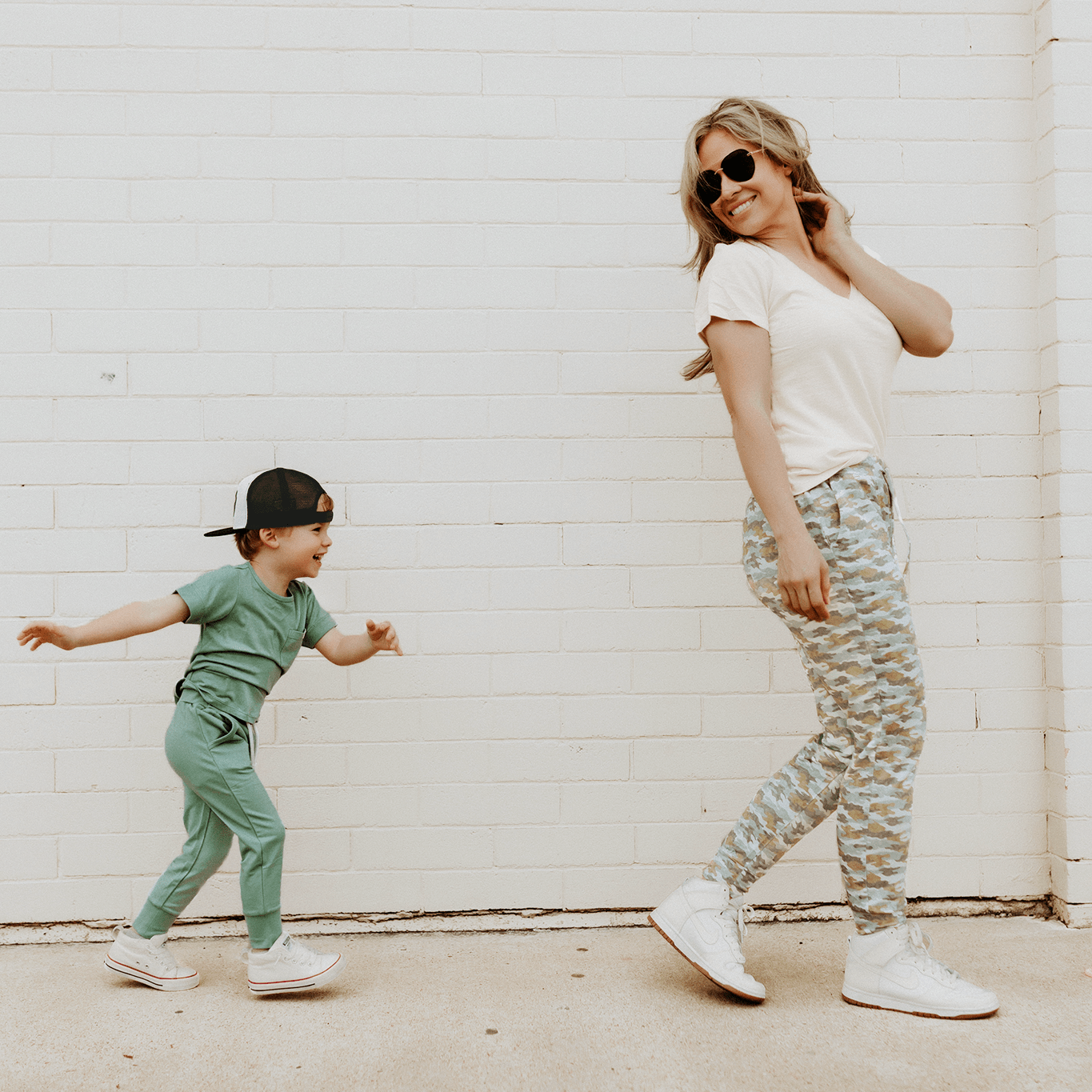
Credit: freebirdees.com
Post-war Prosperity
After World War II, the world saw a period of great economic growth. This prosperity had a significant impact on various aspects of life, including kids’ fashion. Parents had more disposable income and could spend more on their children’s clothing. As a result, children’s fashion began to evolve rapidly during this time.
Bright Colors
During the post-war era, bright colors became popular in kids’ fashion. These bold hues reflected the optimism of the time. Parents wanted their children to wear clothes that showcased happiness and hope. Bright reds, blues, and yellows became common in children’s wardrobes. These vibrant colors also made kids easier to spot while playing outside, adding a practical element.
Suburban Influence
The rise of suburban living also influenced kids’ fashion. Families moved to suburban areas, where the lifestyle was more relaxed. This shift brought a new focus on casual and comfortable clothing for children. Play clothes, like jeans and T-shirts, became more popular. Suburban kids needed outfits suited for outdoor activities and playdates.
Parents also embraced matching family outfits, inspired by suburban lifestyles. Coordinated looks for families became a trend, showcasing unity and togetherness. This trend further impacted the styles and choices available in kids’ fashion during this period.
The Swinging Sixties
The Swinging Sixties brought a significant shift in kids’ fashion. This decade was known for its vibrant colors and bold styles. Kids’ clothing became more playful and expressive. Parents embraced these new trends, dressing their children in trendy outfits.
Mini Dresses
Mini dresses became a popular choice for young girls. These dresses were shorter and more fun. Bright colors and playful patterns dominated the designs. Designers focused on comfort and style. Mini dresses allowed kids to move freely. This trend was perfect for active, energetic children. It reflected the joyful spirit of the sixties.
Mod Styles
Mod styles influenced kids’ fashion in a big way. This trend featured geometric patterns and bold colors. Boys and girls wore slim-fitting clothes. The mod look was sleek and modern. It often included matching sets for siblings. This style made kids look stylish yet age-appropriate. Mod styles gave kids a chic and fresh appearance.
The Seventies
The seventies were a colorful and vibrant decade for kids’ fashion. This era embraced bold patterns, vivid colors, and unique styles. Children’s clothing reflected the free-spirited and experimental nature of the times. Let’s explore two iconic styles: Bell Bottoms and Casual Wear.
Bell Bottoms
Bell bottoms were a defining trend in the seventies. Kids’ wardrobes were not complete without them. These pants flared out from the knee, creating a distinctive look. Usually made from denim or corduroy, they often featured fun patches and embroidery.
Bell bottoms were paired with a variety of tops. Popular choices included turtlenecks, peasant blouses, and graphic tees. This combination created a casual yet stylish ensemble.
Here’s a quick overview of bell bottoms in the seventies:
- Material: Denim, corduroy
- Patterns: Solid colors, patches, embroidery
- Tops: Turtlenecks, peasant blouses, graphic tees
Casual Wear
Casual wear in the seventies was all about comfort and expression. Kids’ clothing was designed to be playful and practical. Bright colors and bold prints were everywhere. Stripes, polka dots, and floral patterns dominated the scene.
Popular casual outfits included overalls, jumpsuits, and tracksuits. These pieces were easy to wear and allowed kids to move freely. They were often accessorized with colorful belts, headbands, and sneakers.
Let’s look at the key elements of casual wear:
| Item | Description |
|---|---|
| Overalls | Comfortable and practical, often in denim |
| Jumpsuits | One-piece outfits with fun patterns |
| Tracksuits | Sporty and stylish, usually in bright colors |
Accessories played a crucial role in seventies casual wear. Kids loved to personalize their outfits. Belts, headbands, and sneakers were popular choices.
The seventies was a decade where kids’ fashion truly shone. It was a time of bold choices and vibrant styles. Bell bottoms and casual wear were just two of the many trends that defined this exciting era.
The Eighties
The eighties marked a transformative period in kids fashion. This decade saw a surge in bold styles and unique trends. Vibrant colors and eye-catching patterns became the norm. Kids fashion mirrored adult trends, bringing high fashion to the younger generation.
Bold Patterns
Bold patterns dominated the eighties kids fashion scene. Stripes, polka dots, and geometric shapes were everywhere. These patterns were often mixed and matched for a striking look. Bright neon colors added to the boldness. Kids wore these patterns on everything from shirts to leggings. The aim was to stand out and make a statement.
Designer Labels
Designer labels became a status symbol in the eighties. Brands like Ralph Lauren and Calvin Klein entered the kids fashion market. Parents wanted their kids to wear the same high-end labels they did. Designer clothes for kids were often mini versions of adult collections. This trend brought a touch of luxury to children’s wardrobes.
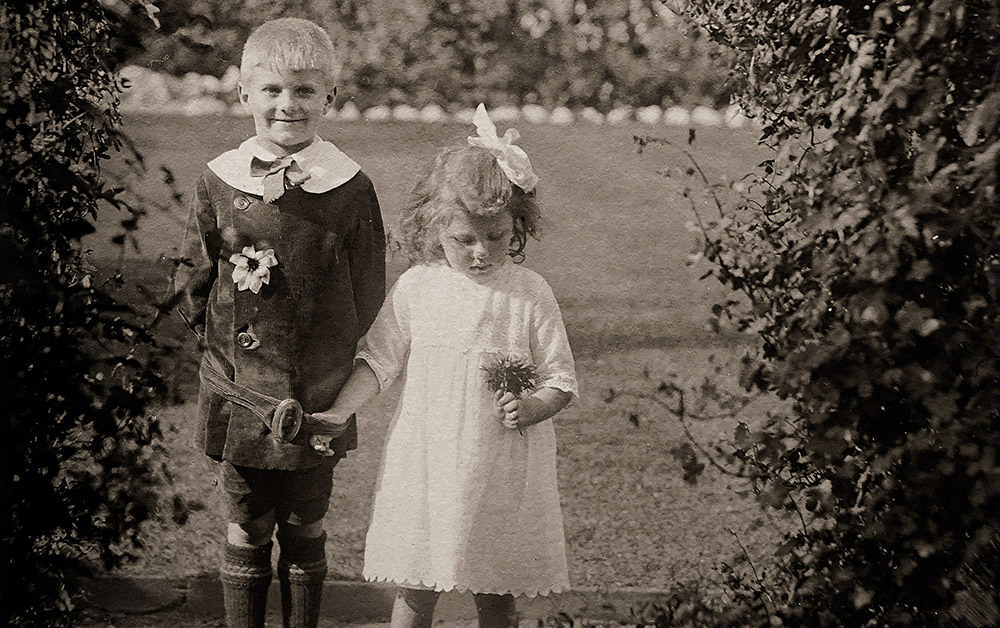
Credit: uk.kidsaround.com
The Nineties
The nineties brought a unique twist to kids’ fashion. This decade saw a blend of grunge, preppy, and sporty styles. Kids embraced new trends, mixing and matching to create their own looks. Bold colors, oversized clothing, and playful patterns were everywhere.
Grunge Influence
Grunge fashion had a major impact on kids’ wear in the nineties. Inspired by bands like Nirvana, kids wore flannel shirts, ripped jeans, and combat boots. The look was casual, comfortable, and rebellious. Plaid patterns became a staple in many wardrobes.
| Grunge Elements | Examples |
|---|---|
| Flannel Shirts | Layered over t-shirts |
| Ripped Jeans | Distressed and worn |
| Combat Boots | Sturdy and edgy |
Athleisure Trends
Athleisure became popular in the nineties. Kids wore sporty clothes even outside of the gym. Tracksuits, sneakers, and baseball caps were common. Brands like Nike and Adidas were huge. Comfort was key, but style wasn’t sacrificed.
- Tracksuits: Matching sets in bright colors
- Sneakers: High-tops and running shoes
- Baseball Caps: Worn forward or backward
These trends made it easy for kids to stay active while looking cool. Athleisure blurred the lines between sportswear and everyday fashion.
Early 2000s
Kids fashion in the early 2000s saw a mix of vibrant colors and bold patterns. Baggy jeans, graphic tees, and sporty sneakers became popular. Influences from pop culture icons shaped trendy styles.
The early 2000s brought a fresh wave of style for kids. Influences from pop culture and new fashion trends made their way into children’s wardrobes. This era saw a significant shift from the previous decades.Pop Culture Impact
Pop culture played a massive role in kids’ fashion in the early 2000s. TV shows, movies, and music stars had a huge influence. Children wanted to dress like their favorite celebrities. Britney Spears, the Spice Girls, and boy bands inspired many outfits. Bright colors, sparkly accessories, and bold patterns became popular. Cartoon characters also made their way into kids’ clothing. T-shirts and backpacks featured beloved characters like Spongebob Squarepants and Dora the Explorer.Denim Craze
Denim was everywhere in the early 2000s. Jeans, jackets, and skirts were all the rage. Kids wore denim in various styles and colors. Embellished jeans with patches and rhinestones were trendy. Denim skirts paired with colorful tops became a common look. Overalls also made a comeback, often seen on playgrounds and in classrooms. Comfortable yet stylish, denim became a staple in every child’s closet. “`2010s
The 2010s marked a significant era in kids’ fashion. This decade saw a blend of modern technology and a growing awareness of sustainability. Parents and designers began to prioritize eco-friendly fabrics and tech-infused clothing. These trends defined the fashion choices for children.
Eco-friendly Fabrics
Eco-friendly fabrics gained popularity in the 2010s. Parents wanted safe and sustainable options for their kids. Organic cotton, bamboo, and recycled materials became common choices. These fabrics are soft and gentle on children’s skin.
Using eco-friendly fabrics has several benefits. Here are a few:
- Reduced environmental impact
- Non-toxic and chemical-free
- Durable and long-lasting
Brands started to focus on sustainable practices. This ensured the production of ethical clothing. The demand for eco-friendly fabrics increased. This shift in preference reshaped the kids’ fashion industry.
Tech-infused Clothing
The 2010s also saw the rise of tech-infused clothing. Parents sought innovative solutions for their children’s safety and comfort. Tech-infused clothing included features like:
- GPS tracking
- Temperature regulation
- Interactive designs
These advancements made clothing more functional. GPS tracking helped parents keep track of their kids. Temperature-regulating fabrics ensured comfort in various weather conditions. Interactive designs made clothes fun and engaging.
Brands incorporated smart textiles into their collections. This blend of fashion and technology created unique clothing options. The 2010s were a transformative period for kids’ fashion. The focus on eco-friendly fabrics and tech-infused clothing defined the decade.
Modern Day
In the modern day, kids’ fashion has seen a significant transformation. Parents and designers are embracing new trends that reflect today’s values. This shift emphasizes individuality, sustainability, and inclusivity.
Gender-neutral Styles
Gender-neutral styles are a major trend in kids’ fashion. These clothes break away from traditional gender norms. Instead of pink for girls and blue for boys, designers use a wide range of colors. Bold patterns and versatile designs are also popular. This approach allows children to express themselves freely. It encourages individuality and self-confidence.
Sustainable Fashion
Sustainable fashion is a growing concern for many parents. They want to ensure that their kids’ clothes are eco-friendly. Brands are responding by using organic materials. These materials include organic cotton and recycled fabrics. Sustainable fashion also involves ethical production practices. This ensures that workers are treated fairly.
| Aspect | Gender-Neutral Styles | Sustainable Fashion |
|---|---|---|
| Focus | Inclusivity | Eco-friendliness |
| Materials | All colors and patterns | Organic and recycled fabrics |
| Design | Versatile | Ethically produced |
- Gender-neutral styles foster self-expression.
- Sustainable fashion promotes environmental awareness.
- Both trends focus on creating a better future.
Influence Of Social Media
The evolution of kids fashion has been significantly influenced by social media. Platforms like Instagram, TikTok, and YouTube showcase the latest trends. This exposure shapes how children dress and express themselves. Social media has made fashion more accessible, allowing kids to explore diverse styles. The impact of digital platforms is undeniable.
Instagram Trends
Instagram plays a crucial role in kids fashion. It is a visual platform where trends spread rapidly. Parents and kids follow influencers who share stylish outfits. They draw inspiration and recreate these looks. Instagram trends set the tone for what is popular in kids fashion.
Colorful patterns and unique designs often go viral. Kids love to wear what they see on their favorite Instagram accounts. This instant access to fashion trends keeps the industry dynamic and ever-changing.
Influencer Collaborations
Influencers collaborate with brands to promote kids fashion. These partnerships introduce new styles to a wide audience. Influencers often have a significant impact on their followers’ choices. Kids look up to these influencers and want to mimic their style.
Collaborations often result in exclusive collections. These collections are trendy and appealing. Brands benefit from the influencers’ reach, and influencers gain from the brands’ credibility. This symbiotic relationship drives the fashion industry forward.
Below is a table showing popular influencers and their collaborations:
| Influencer | Brand | Collection |
|---|---|---|
| Influencer A | Brand X | Summer Collection |
| Influencer B | Brand Y | Winter Collection |
| Influencer C | Brand Z | Spring Collection |
These collaborations are more than just business deals. They influence fashion choices for many children. Social media continues to shape the future of kids fashion.
Future Predictions
The world of kids fashion is always changing. What does the future hold? Let’s explore some exciting trends.
Smart Clothing
Imagine your child’s clothes doing more than just keeping them warm. Smart clothing is on the horizon. These garments will have built-in technology. For example, a jacket that tracks your child’s location. Or shoes that monitor their steps and activity. This technology can offer peace of mind for parents.
Smart clothing can also be fun for kids. Some clothes will change color with temperature. Others might have LED lights that kids can control. This makes fashion interactive and exciting.
Virtual Fashion Shows
Fashion shows are going digital. Virtual fashion shows are becoming popular. These shows can be watched from anywhere. This means no need to travel to big cities. Kids can see the latest trends from their homes.
Virtual fashion shows can be interactive. Viewers can click on clothes they like. They can see details up close. Some shows will even allow buying directly. This makes shopping easy and fun.
These changes make fashion more accessible. Kids everywhere can participate. The future of kids fashion is bright and full of possibilities.
Frequently Asked Questions
What Are The Main Trends In Kids Fashion?
Trends include bright colors, eco-friendly fabrics, and comfortable styles. Popular themes are animals and space.
How Has Kids Fashion Evolved Over The Years?
Kids fashion has shifted from formal to casual. Now, it focuses on comfort, sustainability, and fun designs.
Why Is Eco-friendly Clothing Important For Kids?
Eco-friendly clothing is safer for kids and the environment. It reduces exposure to harmful chemicals.
What Role Do Parents Play In Kids Fashion Choices?
Parents often choose practical, durable clothes. They also look for styles their kids will love.
How Do Kids’ Preferences Influence Fashion Trends?
Kids’ favorite characters and activities shape fashion trends. Brands create clothes that reflect these interests.
Conclusion
Kids’ fashion has come a long way. Trends evolve, but comfort remains key. Parents seek stylish yet practical outfits. Bright colors and fun patterns dominate. Kids express individuality through clothes. Designers now focus on child-friendly fabrics. Technology also influences kids’ fashion.
Online shopping simplifies finding trendy styles. Kids’ fashion will keep evolving. The future looks exciting and innovative.



